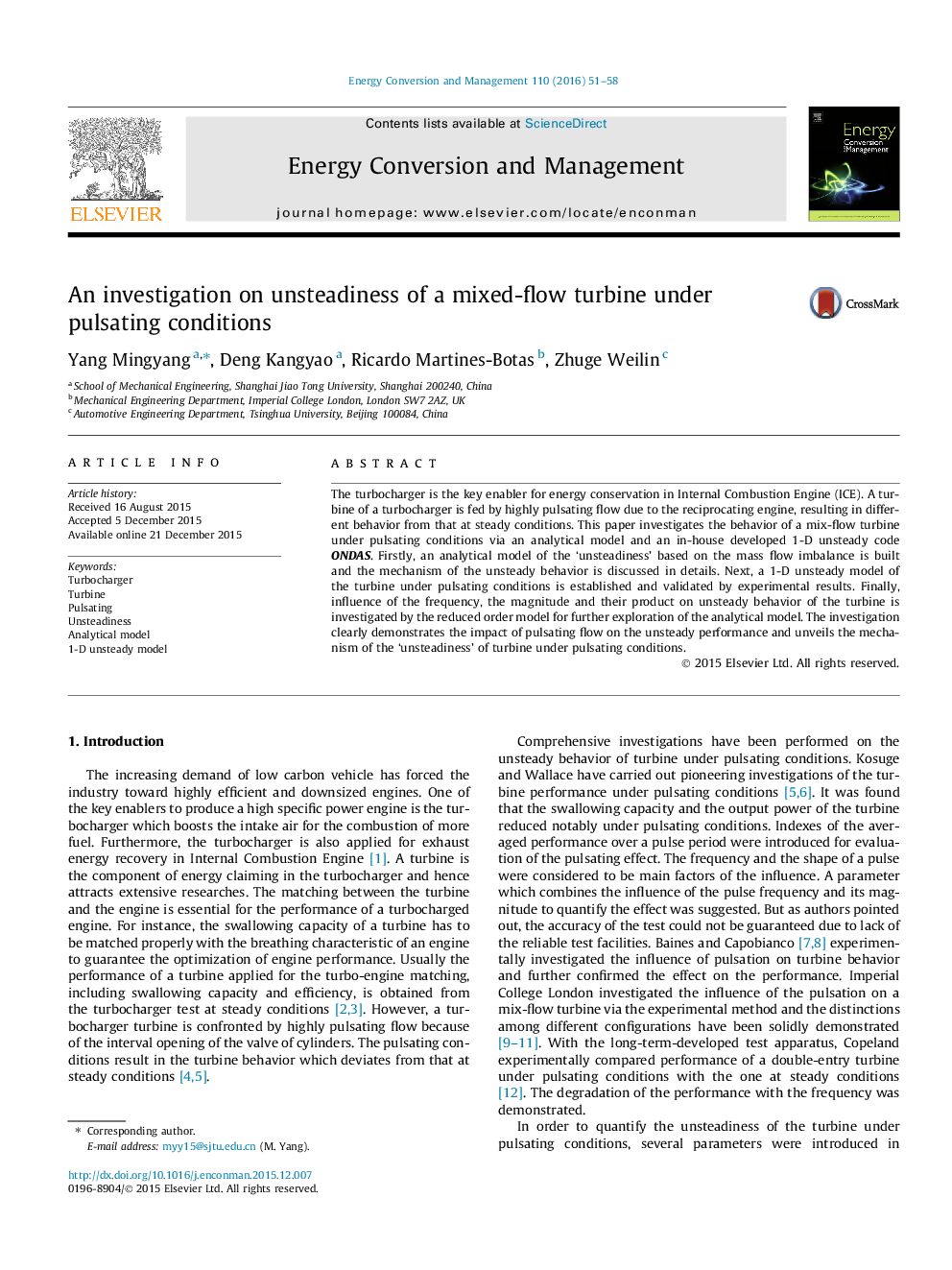| Article ID | Journal | Published Year | Pages | File Type |
|---|---|---|---|---|
| 760344 | Energy Conversion and Management | 2016 | 8 Pages |
•Analytical model proves gradient of total pressure as the root of the unsteadiness.•Product of Strouhal number and magnitude is proportional to turbine unsteadiness.•Asymptotic curves exist in hysteresis loops for influence of frequency or magnitude.
The turbocharger is the key enabler for energy conservation in Internal Combustion Engine (ICE). A turbine of a turbocharger is fed by highly pulsating flow due to the reciprocating engine, resulting in different behavior from that at steady conditions. This paper investigates the behavior of a mix-flow turbine under pulsating conditions via an analytical model and an in-house developed 1-D unsteady code ONDAS. Firstly, an analytical model of the ‘unsteadiness’ based on the mass flow imbalance is built and the mechanism of the unsteady behavior is discussed in details. Next, a 1-D unsteady model of the turbine under pulsating conditions is established and validated by experimental results. Finally, influence of the frequency, the magnitude and their product on unsteady behavior of the turbine is investigated by the reduced order model for further exploration of the analytical model. The investigation clearly demonstrates the impact of pulsating flow on the unsteady performance and unveils the mechanism of the ‘unsteadiness’ of turbine under pulsating conditions.
